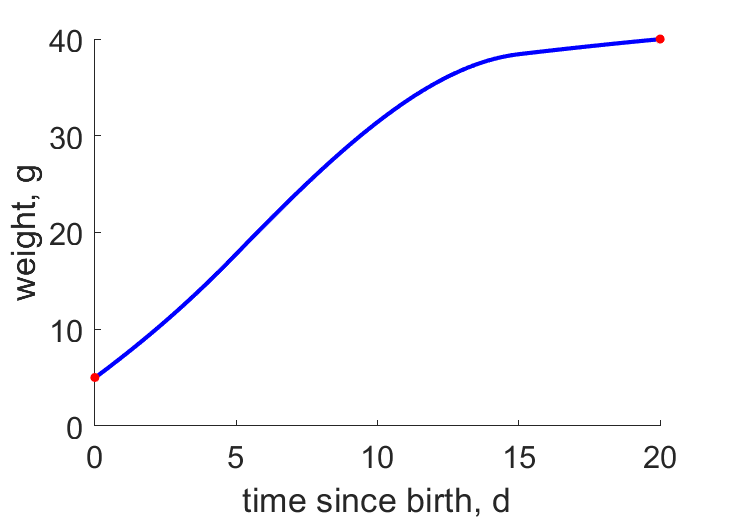Predictions & Data for this entry
| Model: std | climate: BS | migrate: Ms | phylum: |
| COMPLETE = 2.7 | ecozone: THn | food: biCi, biCv | class: |
| MRE = 0.003 | habitat: 0iTh, 0iTi, 0iTf | gender: Dg | order: |
| SMSE = 0.000 | embryo: Tnwf | reprod: O | family: |
Zero-variate data
| Data | Observed | Predicted | (RE) | Unit | Description | Reference |
|---|---|---|---|---|---|---|
| ab | 24 | 24.29 | (0.0121) | d | age at birth | avibase |
| tx | 30.5 | 30.5 | (5.56e-05) | d | time since birth at fledging | avibase |
| tp | 91.5 | 91.17 | (0.00364) | d | time since birth at puberty | guess |
| tR | 365 | 365 | ( 0) | d | time since birth at 1st brood | avibase |
| am | 5110 | 5117 | (0.001288) | d | life span | avibase |
| Ww0 | 7.3 | 7.353 | (0.007221) | g | initial weight | avibase |
| Wwb | 5 | 4.96 | (0.008049) | g | wet weight at birth | avibase |
| Wwi | 46 | 46.2 | (0.00434) | g | ultimate wet weight for females | avibase |
| Wwim | 43 | 43.01 | (0.0001779) | g | ultimate wet weight for males | avibase |
| Ri | 0.0137 | 0.01368 | (0.001639) | #/d | maximum reprod rate | avibase |
Uni- and bivariate data
| Data | Figure | Independent variable | Dependent variable | (RE) | Reference |
|---|---|---|---|---|---|
| tW |  | time since birth | weight | (0.001165) | HenrGehl2020 |
Pseudo-data at Tref = 20°C
| Data | Generalised animal | Micrathene whitneyi | Unit | Description |
|---|---|---|---|---|
| v | 0.02 | 0.03346 | cm/d | energy conductance |
| p_M | 18 | 213.1 | J/d.cm^3 | vol-spec som maint |
| k_J | 0.002 | 0.008743 | 1/d | maturity maint rate coefficient |
| k | 0.3 | 0.3003 | - | maintenance ratio |
| kap | 0.8 | 0.8716 | - | allocation fraction to soma |
| kap_G | 0.8 | 0.8001 | - | growth efficiency |
| kap_R | 0.95 | 0.95 | - | reproduction efficiency |
Discussion
- males are assumed to differ from females by {p_Am} only
- Body temperature is guessed
- mod_1: Pseudo-data point k is used, rather than k_J; Data set tp and parameter t_R are added, the latter replacing clutch interval t_N. Postnatal T is based on PrinPres1991, see get_T_Aves. See further the revision page, theme puberty
Bibliography